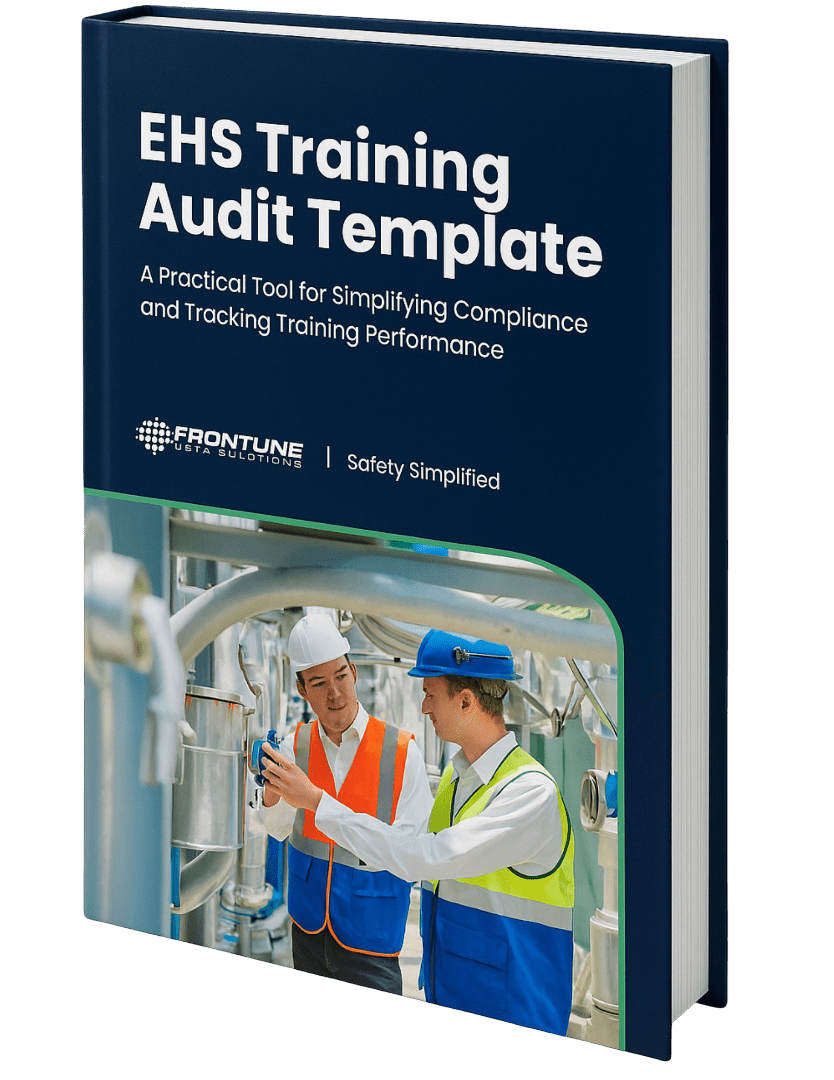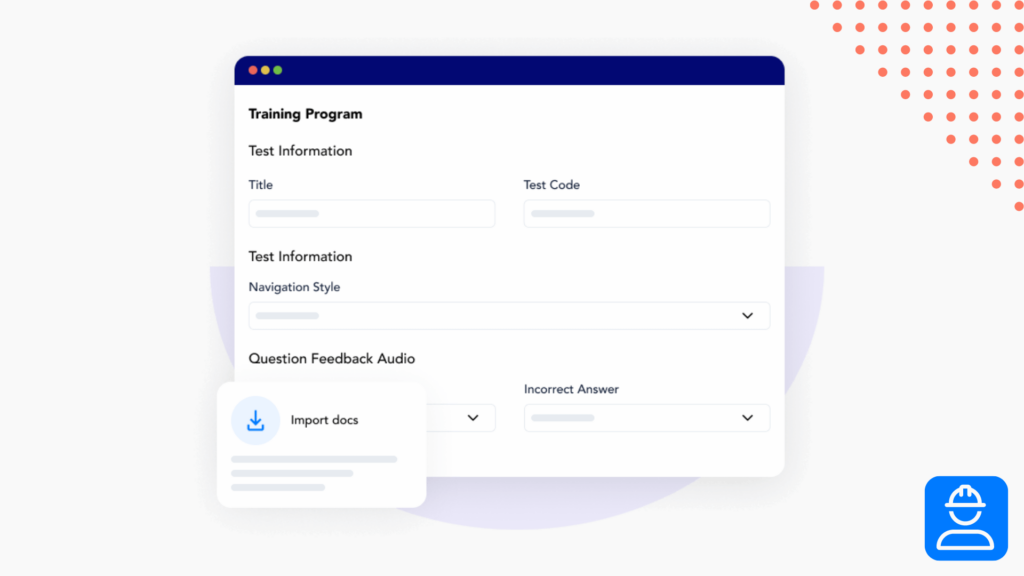Tracking safety training is an essential part of maintaining compliance, It’s also one of the most time-consuming administrative tasks for EHS teams. Many companies find that manual methods like spreadsheet management, in-person follow ups, and tedious report building become unmanageable over time.
That’s where a learning management system (LMS) can completely transform your process. An LMS is a powerful tool for coordinating, assigning, tracking, and documenting workplace safety training. It allows you to simplify your processes so you can spend more time out of the office, interacting with frontline workers in real time. If you’re struggling to keep up with documentation or just want to improve your methods, switching to a digital system can make a huge difference.
Free EHS Training Audit Template to Get Started
Download our EHS Training Audit Template, which provides step-by-step guidance for auditing your training program. With it you, can find new opportunities to improve processes and achieve better training outcomes for compliance.

Centralize and Simplify Safety Training Tracking
A learning management system eliminates the need for manual spreadsheets and paper-based records. Instead, it provides a central place where you can assign, monitor, and document all employee training.
By automating repetitive tasks, an LMS allows your EHS team to focus more on improving safety rather than chasing down documents, employees, or action items. Common LMS tools that simplify training management include:
- Automatic reminders for upcoming and overdue training
- Real-time dashboards showing completion rates and compliance status
- Class scheduling and attendance tracking
- Remote learning options for field and shift workers
- Secure cloud storage of all training materials and records
With these features, you can instantly pull reports, verify compliance, and demonstrate training completion during audits more accurately in less time.
Standardize Training Documentation
Without standardization, training records can become inconsistent and disorganized. An LMS enforces uniformity across all training data, helping you maintain accuracy and consistency.
You can set company-wide naming conventions, course content, and file storage, so every record follows the same format. This reduces human error and ensures your team can always find what they need when it matters most.
It’s also essential for achieving compliance across different sites and locations. For many teams, managing multiple EHS locations makes it hard to roll out updates to training. With an LMS, you can update content and push it out to all locations at once, closing potential compliance gaps.

Maintain Regulatory Compliance Effortlessly
Compliance training is often tied to specific job roles, tasks, or regulations. Tracking those requirements manually leaves room for oversight.
With an LMS, you can:
- Assign mandatory training to specific job titles or departments
- Automatically track completion against regulatory deadlines
- Generate reports that help you prove compliance
Instead of manually filtering spreadsheets or reviewing training logs, you’ll always know who’s compliant and who needs follow-up.
Improve Accountability Across the Team
When safety training tracking happens in one system, everyone can see what’s expected of them. Managers receive alerts when team members have overdue training, while employees get reminders to complete upcoming courses.
This shared visibility promotes accountability at every level of your company and helps ensure training stays on schedule. With greater accountability, you can easily find issues within your team or processes. For example, do certain employees tend to get behind? Which training assignments keep falling through the cracks? Are specific managers struggling to keep their team compliant?
These insights and more can improve how you manage training as a site. Over time, this increases compliance and prevents incidents.
Streamline Safety Training Tracking with Frontline LMS
Frontline LMS is a user-friendly software system from Frontline Data Solutions. We built it to simplify how EHS teams manage and track employee training. The platform automates everything from assigning courses to recording completion, so you can spend less time on admin work and more time strengthening your safety culture.
Key features of Frontline LMS include:
- Automated training reminders and notifications
- Real-time dashboards and analytics
- Secure cloud-based recordkeeping
- Mobile learning for on-the-go workers
- Simple class scheduling and reporting tools
With Frontline LMS, your team can stay compliant, organized, and audit-ready year-round.
Check out our free EHS Training Management Guide to evaluate your current process and see where you can save time with Frontline LMS. Or head to our pricing calculator to get an instant quote of the cost of switching to a digital solution.




